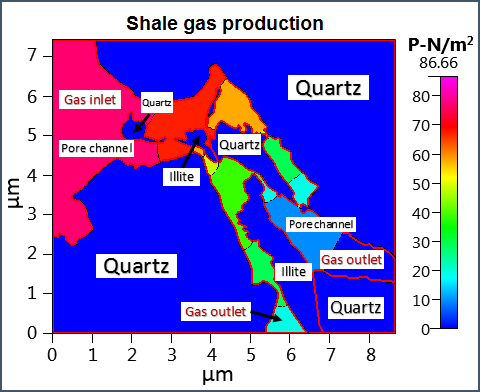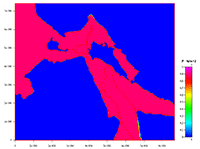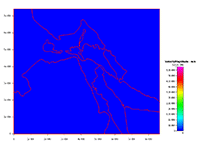EPJ E Highlight - The physics of extracting gas from shale formations
- Details
- Published on 21 November 2018

A new study outlines the key parameters affecting the production of gas from shale reservoirs, by simulating what is happening at the microscopic scale.
Extracting gas from new sources is vital in order to supplement dwindling conventional supplies. Shale reservoirs host gas trapped in the pores of mudstone, which consists of a mixture of silt mineral particles ranging from 4 to 60 microns in size, and clay elements smaller than 4 microns. Surprisingly, the oil and gas industry still lacks a firm understanding of how the pore space and geological factors affect gas storage and its ability to flow in the shale. In a study published in EPJ E, Natalia Kovalchuk and Constantinos Hadjistassou from the University of Nicosia, Cyprus, review the current state of knowledge regarding flow processes occurring at scales ranging from the nano- to the microscopic during shale gas extraction. This knowledge can help to improve gas recovery and lower shale gas production costs.
Extracting gas from shale has become a popular method in North America and has attracted growing interest in South America and Asia, despite some public opposition. Unlike conventional reservoirs, the pore structures of shale gas reservoirs range from the nanometric to microscopic scale; most natural gas reservoirs display microscopic or larger scale pores.
In this paper, the authors outline the latest insights into how the pore distribution and geometry of the shale matrix affect the mechanics of the gas transport process during extraction. In turn, they present a model based on a microscopic image obtained via scanning electron microscopy to determine how gas pressure and gas speed vary throughout the shale. The model is in agreement with experimental evidence.
The authors reveal that the orientation, density and magnitude of rock bottlenecks can affect the volume and flow in gas production, due to their impact on the distribution of pressure throughout the reservoir. The findings of their numerical simulation match available theoretical evidence.
Click on the images to watch the transient modelling of pressure and velocity distribution for porous illite


N. Kovalchuk and C. Hadjistassou (2018), New Insights from Shale Gas Production at the Microscopic Scale, Eur. Phys. J. E, 2018, 41:134. DOI: 10.1140/epje/i2018-11741-5




